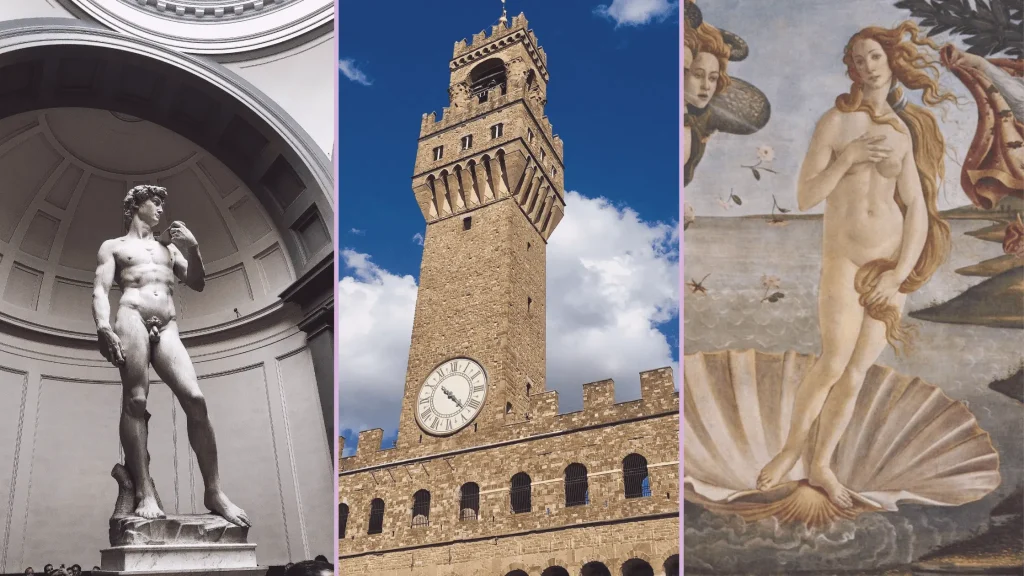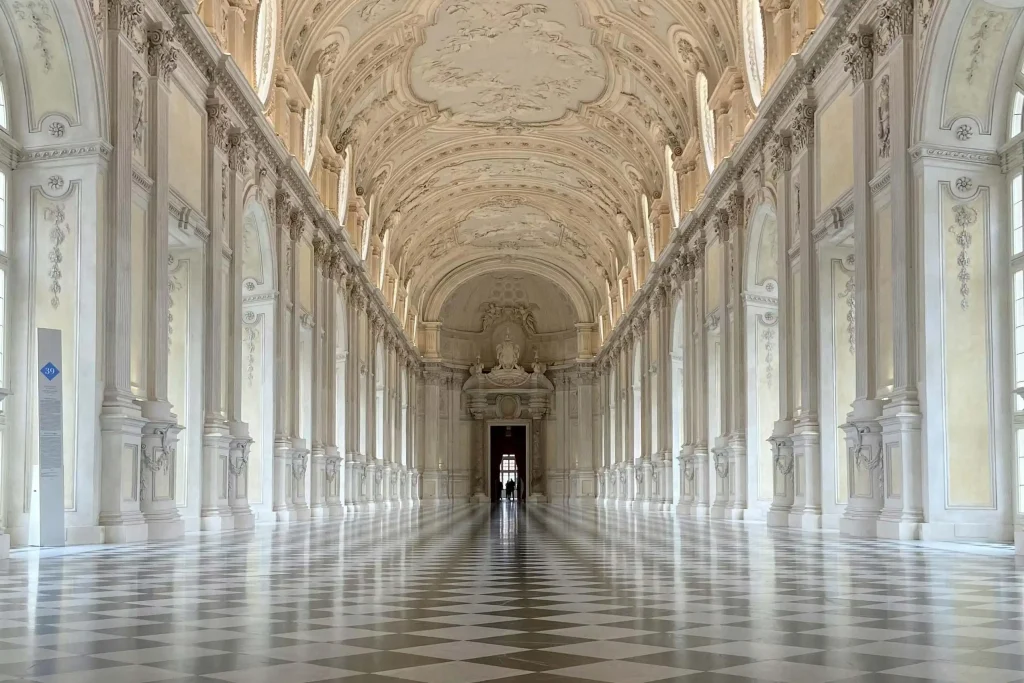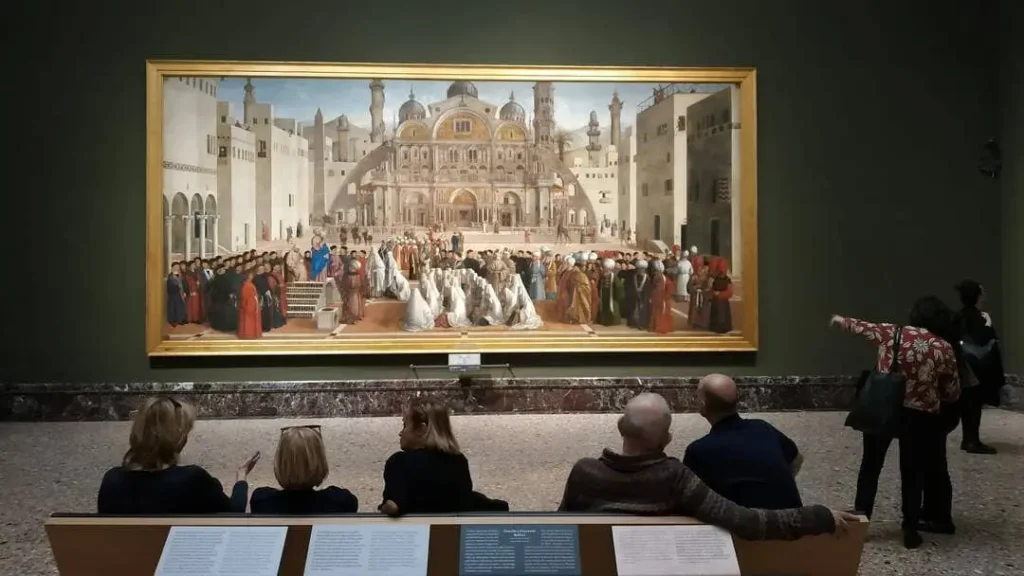
Galleria dell’Accademia, Florence: how to get there and what to see
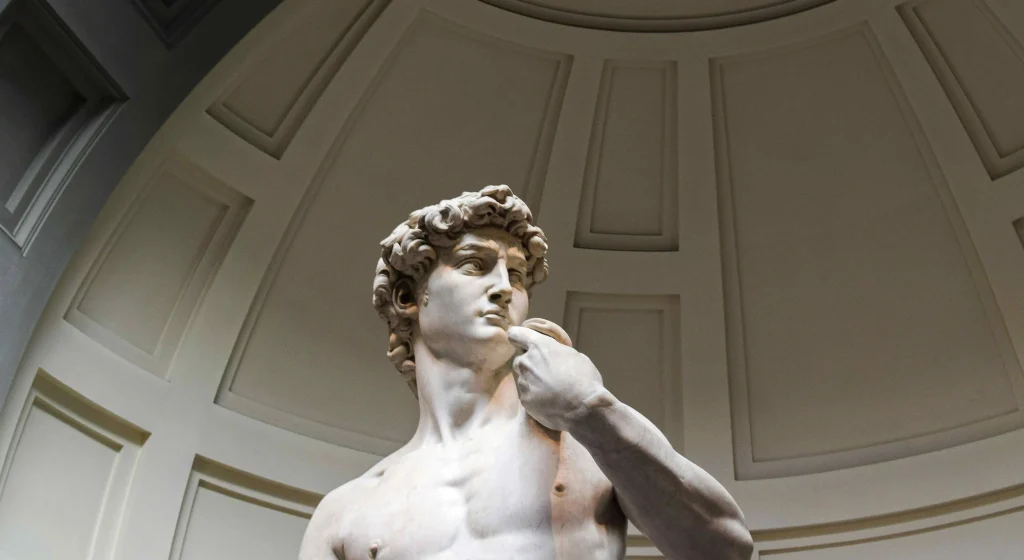
The arrival of spring brings a renewed urge to travel and explore Italy. We thought it would be a good idea to describe the highlights of our country starting with the Cradle of the Renaissance and, more specifically, Galleria dell’Accademia.
Galleria dell’Accademia was founded in 1784 at the behest of of Pietro Leopoldo, Grand Duke of Tuscany, as an efficient way to organize the Academy of Fine Arts. It soon turned into a museum housing important works from many nearby churches.
Construction of the Tribune was completed in 1882, and the world’s most famous statue, Michelangelo’s David, was installed there. David had previously stood in Piazza della Signoria, but to protect it from damage and the elements, it was moved to the Tribune, built specifically to showcase the work in all its glory.
We’re ready: fasten your seatbelts and let’s start our tour!
1. MEETING POINT
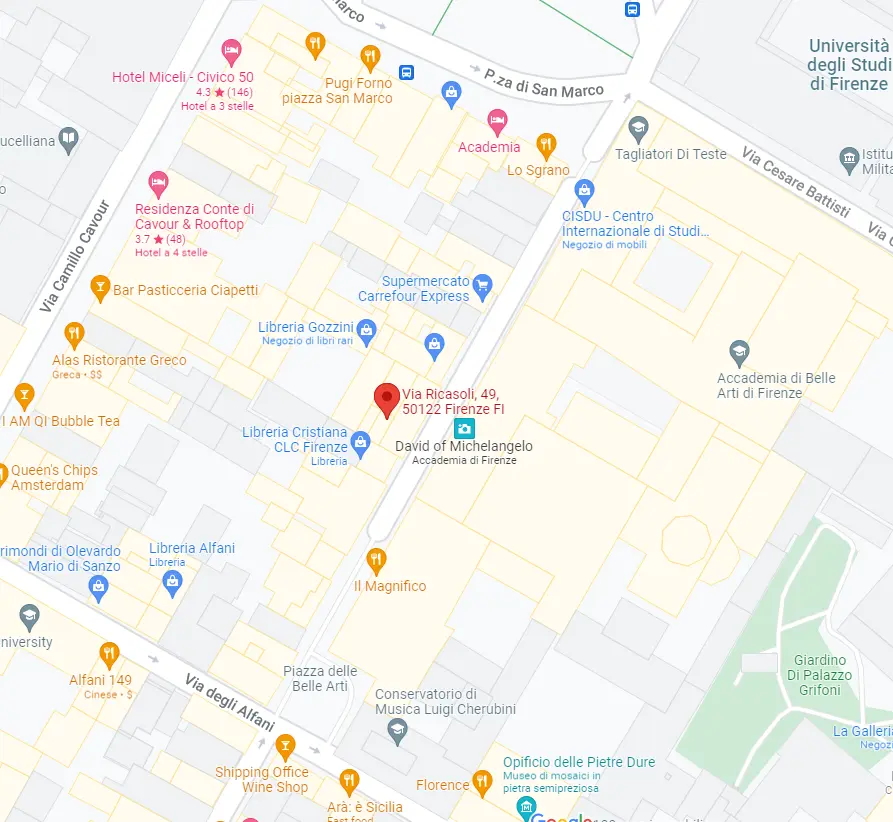
We begin our guided tour from the meeting point with our guide. We’re actually in front of Palazzo Alfani at Via Ricasoli 49.
This is a historic residence now used as accommodation. We advise all our guests to wait here for the guide and not go to the ticket office or entrance: you’d risk a long and fruitless wait and waste valuable time.
As soon as everyone’s ready, ticket in hand (don’t lose it!), here’s a brief introduction to the museum we’re about to visit!
We can now join the queue for pre-booked visits. Don’t worry, it won’t take long: it all depends on the next step:
2. SECURITY CHECKS AT THE ENTRANCE
These are essential for a safe and pleasant visit. First, your temperature is taken and your Super Green Pass checked.
We remind you that currently you must have a Super Green Pass to visit Italian museums. For more information about this certificate and how to obtain it, click HERE. However, the use of facemasks is mandatory inside the museum: we recommend bringing a spare FFP2 mask with you!
Next, we go through a metal detector while our bags pass through the scanner. Remember to inform the security staff if you’re pregnant or you have a pacemaker: instead of the metal detector, you’ll go through a different check.
Please note that knives, scissors and sharp metal objects are not allowed inside the Gallery. Remember: only half-liter water bottles are permitted.
Having passed the checks, we’re ready to go!
3. MUSEUM OF MUSICAL INSTRUMENTS
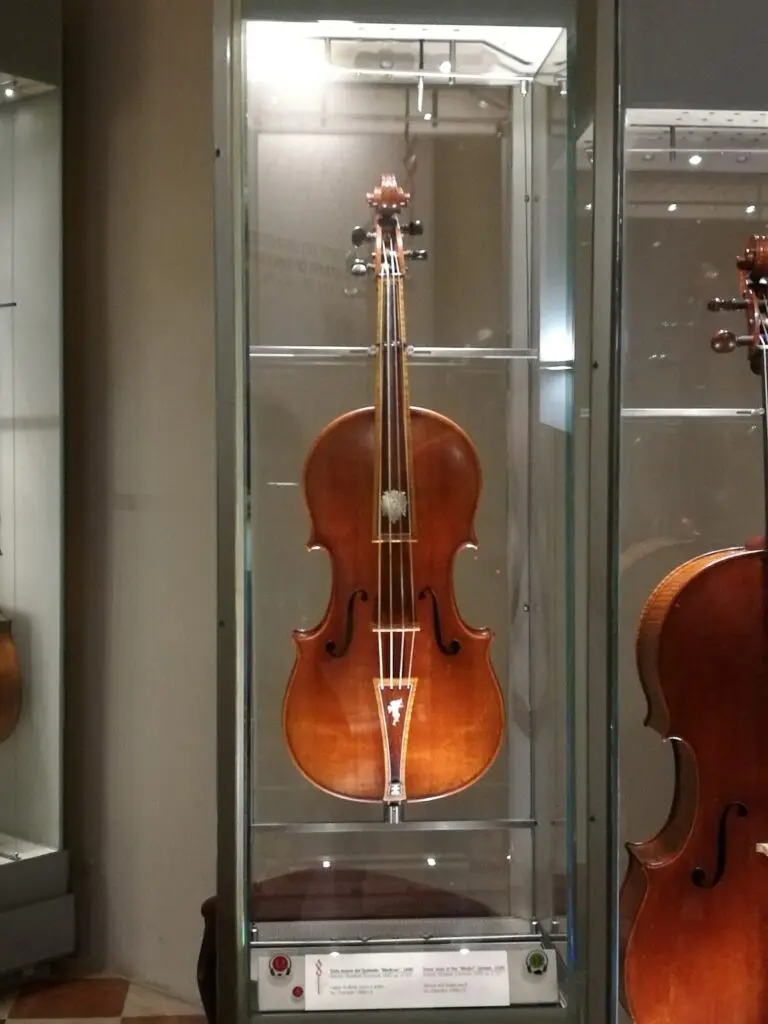
The first surprise in Galleria dell’Accademia is a very special one: the Museum of Musical Instruments.
This wing of the museum, known as the Department of Musical Instruments, was opened in 2001.
Inside, you can admire some 50 instruments from the collections of Florence’s ruling families; they include several antique items owned by the Medicis and the Lorraines.
There are some unique works displayed in this section: examples include a psaltery and a harpsichord. And you can even marvel at a genuine Stradivarius violin: just think, it can still be played!
4. HALL OF THE COLOSSUS
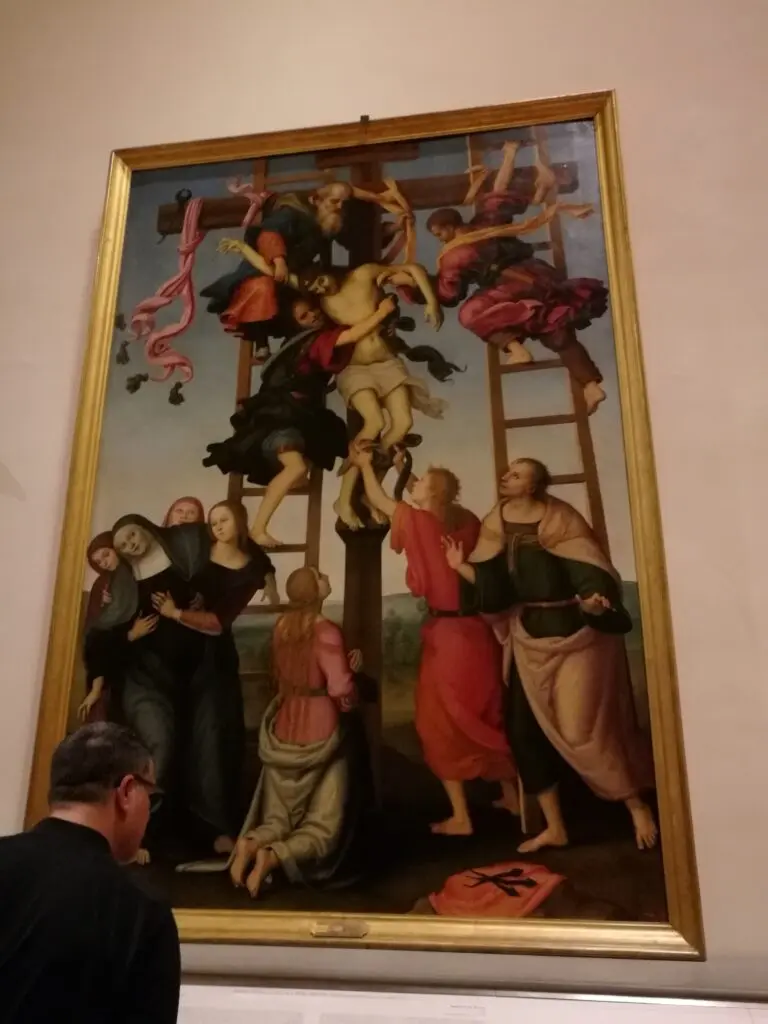
In the center of the room stands Giambologna’s sculpture, Rape of the Sabines. You can get up close to admire the sculpture. It’s one of the few surviving 16th-century plaster models made in 1:1 scale. The marble version of the sculpture can be seen under the Loggia dei Lanzi in Piazza della Signoria.
In this hall, you can also enjoy the many paintings on display; from the 13th to the 16th century, they will take you on a journey through the world’s greatest art. You’ll find unparalleled works by Taddeo Gaddi, Filippino Lippi, Sandro Botticelli, Domenico Ghirlandaio, Andrea del Sarto and Pontormo.
5. HALL OF THE PRISONERS
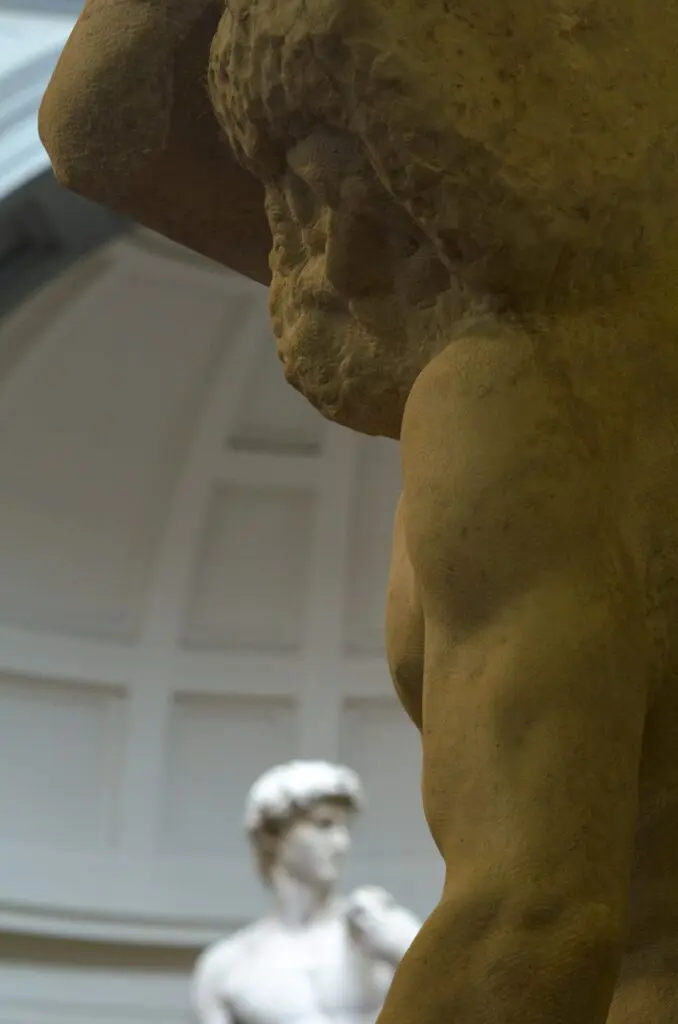
In the background, you’ll glimpse the museum’s top attraction, David, but this gallery will leave you speechless in any case. Here you can admire the Prisoners, a series of statues from Michelangelo’s unfinished cycle, originally intended to adorn the tomb of Pope Julius II in Rome. Examine them carefully: what do their rough marble surfaces convey?
But we can reveal an interesting fact: in the 16th century, marble was extremely expensive. So how did artists try to save money? By recycling old marble. Take a look at the back of these statues; you’ll find that one is decorated with Romanesque motifs.
6. DAVID
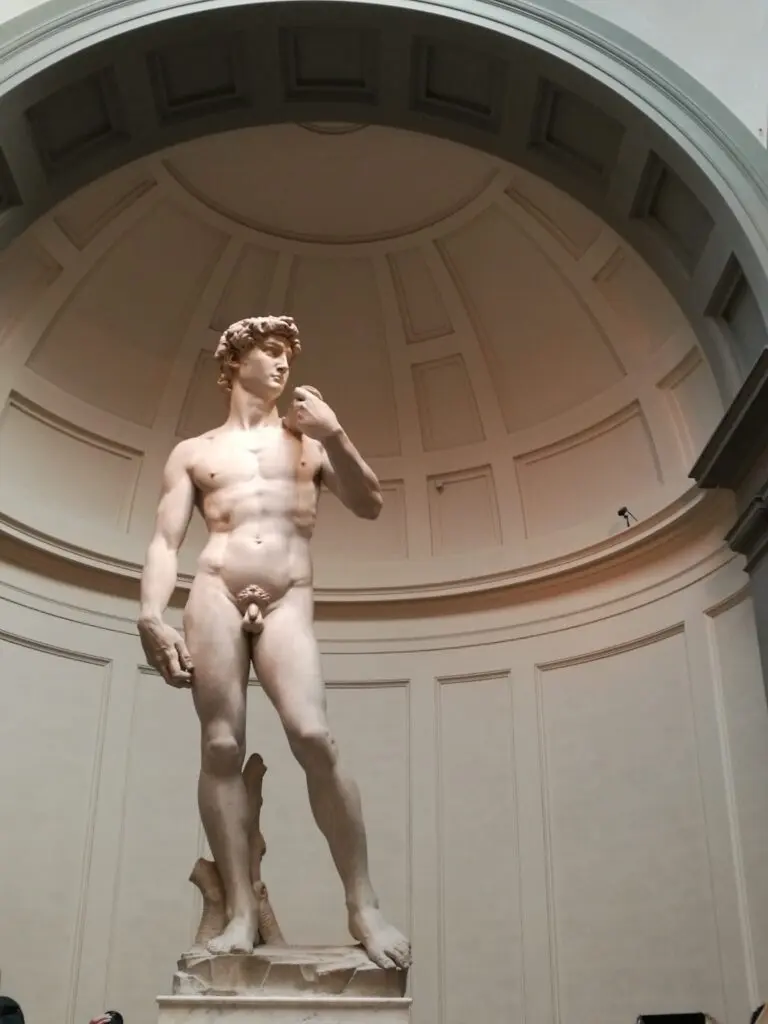
This brings us to the museum’s main attraction. It towers majestically before you: we’re talking about Michelangelo’s masterpiece, namely David!
The sculpture was created between 1501 and 1504, made in marble and enormously tall, at 5.1 meters. This statue encapsulates a significant moment in Florence’s history. It was commissioned from Michelangelo to be displayed at the entrance to Palazzo Vecchio. Its purpose was to remind visitors just how powerful the city was.
Let’s take a moment to admire the perfection of this statue. A handsome young man with gentle features, but conveying immense strength and independence. It’s a lifelike depiction of the biblical hero David, who fought the giant Goliath and emerged victorious.
All that remains to say is that we look forward to welcoming you for a guided tour, including entrance ticket, of Galleria dell’Accademia!!
Our guides will treat you to a fascinating hour exploring this wonderful place, where time seems to stand still!
Categories
Art & Culture City Break Family Friendly Food & Wine Outdoor Rainy Day Romantic UncategorizedFeatured posts
-
Three days to fall in love with Florence
Art & Culture
-
Summer food and wine trip
Food & Wine
-
UNESCO sites in Piedmont
Art & Culture
